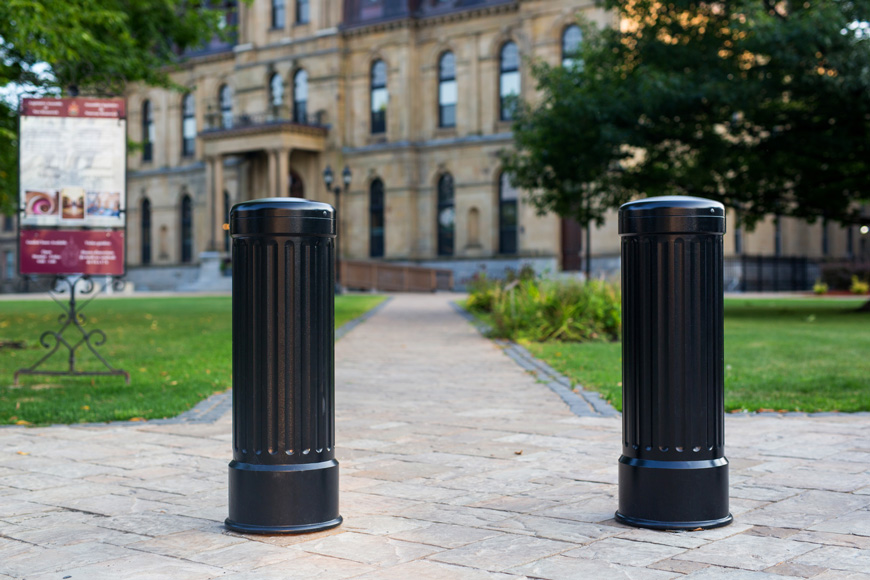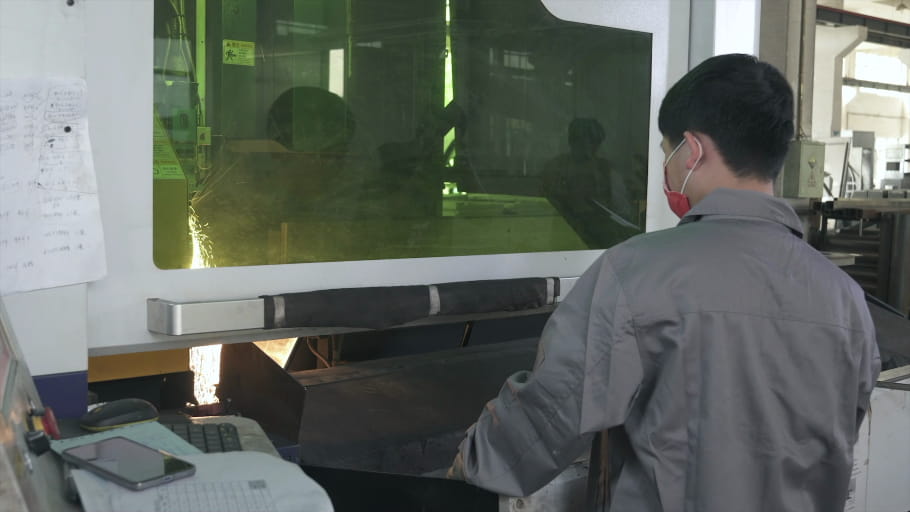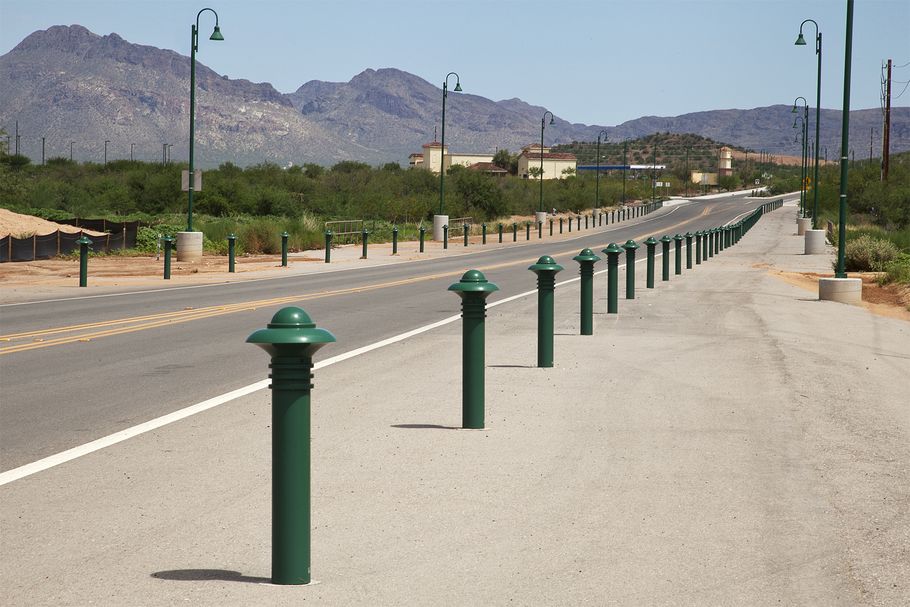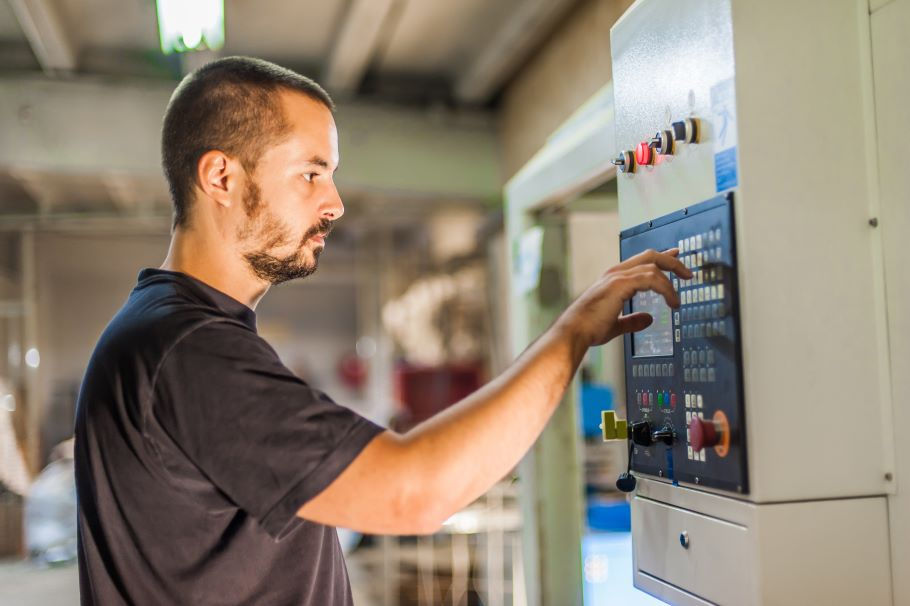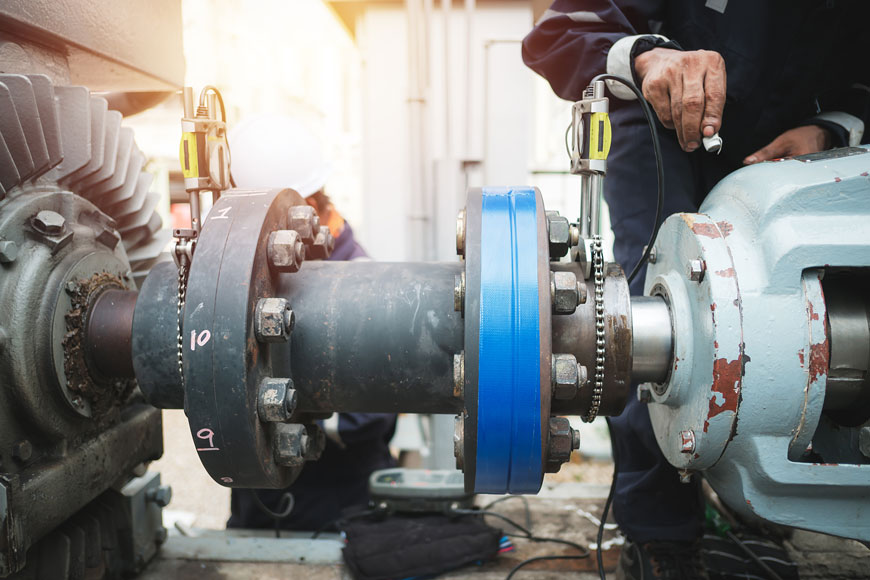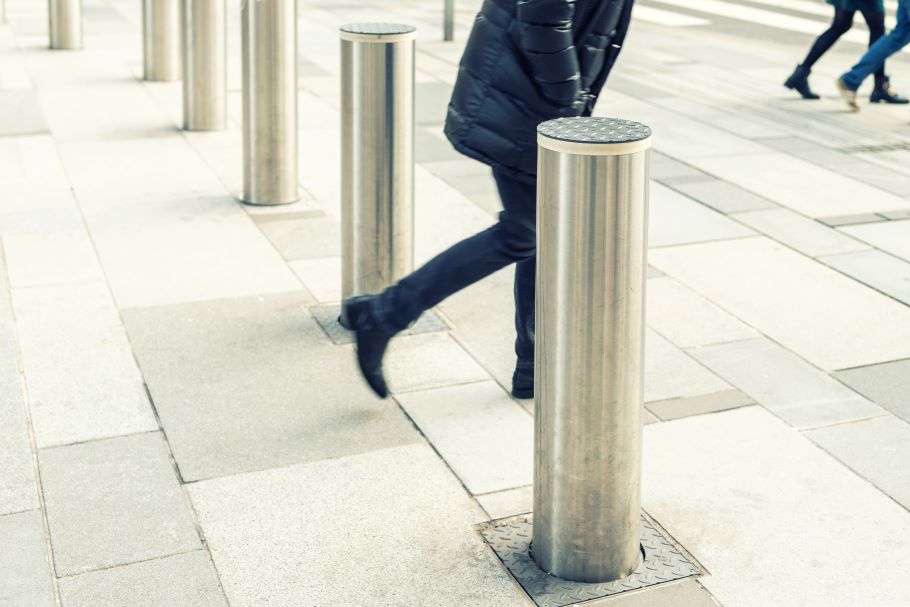And how changes in ground transportation force airports to evolve
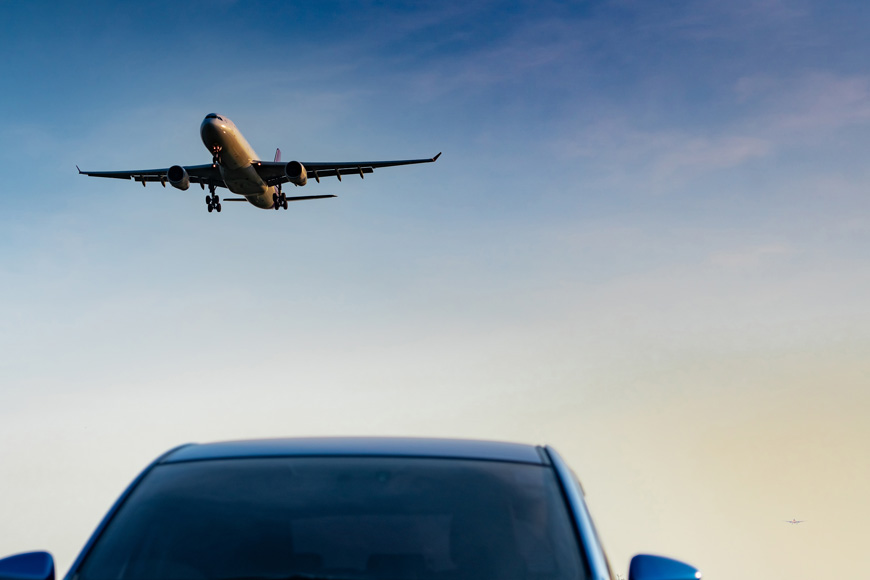
Airports started as a simple transfer point between ground and sky. Travelers were often dropped off: parking was scant. Paid parking lots, with security and lighting, were an innovation introduced in the 1950s in Cleveland. As air-travel became common and airports became bustling hubs, these parking lots became a vital part of an airport’s design. The types available diversified as the number of travelers grew.
In these early days, airports made most of their revenue with passenger fees. Over the past two decades, economic trends and security issues have challenged this business model. In response, airports have become more than a simple transfer point. Now many airports offer shops, restaurants, and services, to diversify their revenue streams. As usage, security, and technology continue to evolve, airport parking lots are forced to adapt to new patterns of passenger movement.
How airport parking works
There are six main types of airport parking:
- Drop-off and pick-up zones give vehicles curbside access to the airport’s entrance for a duration of less than 15 minutes.
- Cell phone waiting lots are remote lots that allow free or cheap parking for a driver who is waiting to pick up an arrival.
- Short-term parking is generally used by drivers who will be in the airport for less than four hours.
- On-site long-term parking allows travelers to park their cars for the duration of their trip.
- Off-site long-term parking offers discounted parking space for travelers wishing to park for the duration of their trip. This parking is unaffiliated with the airport.
- On-site car rental lots feature one or more car rental companies who provide rental cars at the airport.

Drop-off and pick-up zones
Drop-off and pick-up zones are close to the terminal and require curb space. Vehicles may stand or park within a short time frame: usually 15 minutes. This space is not just used by private cars but also valets, shuttles, limos, taxis, and ride-sharing vehicles like Uber and Lyft. In some airports, this front-of-terminal space is also served by transit.
Departure (drop-off) zones see less driver “dwell time” than arrival (pick-up) zones. Dwell time is the amount of time a vehicle takes space at the curb. Shuttles, taxis, and private vehicles generally only need enough time to unload luggage and share a curbside goodbye. Dwell time has been dropping with more using wheeled, carry-on luggage: these travelers do not need to hire carts.
Valet services are the only group with longer dwell times at curbside. This service usually has a dedicated and marked zone and kiosk.
Pick-up zones are becoming more complicated in the age of ride-share. Taxi and limo stands, with a first-come, first-served model, is losing riders to companies like Uber and Lyft. This ride-share behaves more like private passenger pick up. Since ride-share drivers and travelers must find each other, wayfinding information has taken on greater importance. “I’m at pillar C-12,” is a helpful piece of information if the driver and passenger don’t recognize each other.
Shuttles from off-site parking and into major centers also load in passenger-pick up. These may have to wait for driver to check in with dispatch, gather riders, and stow luggage. Transit may also wait in these spaces. Private drivers are also often unsure of when a traveler will be outside waiting, and parties must find each other in a crowd. Therefore, dwell times are higher.
Pick-up areas may be structured to prevent conflict between types of road users. Zones for each type of ground transportation must be managed through careful traffic monitoring and planning. Layers of islands, well-marked crosswalks, speed humps, and wayfinding signs help create wished-for traffic flow. As the entrance and exit to the airport facility, drop-off and pick-up zones have also become the focus of security planning. Strong structural bollards allow easy pedestrian and cart access but will stop a vehicle from crashing into the building.
Cell phone waiting lots
A modern innovation in airports is the cell phone waiting lot. These parking lots shorten vehicle dwell time in passenger pick-up zones. Cars coming to pick up passengers wait at a distance from the main airport until their party has disembarked and picked up bags. The traveler texts or calls when ready for pick-up. This service is usually free, and it means cars do not wait at curbside. However, these lots can compete with on-airport short-term parking.
Short term parking
Short term parking is usually offered in a multi-level parking garage very close to the terminal. It offers parking at the highest hourly rate. It is often choice of those who are escorting those they’re dropping off or are coming into the terminal to meet their party at arrival.
Airports becoming more than just a transfer point may have restaurants, services, or shops accessible to the public. Making short-term parking more affordable is therefore sometimes in the airport’s best interest. A party may arrive early to watch the planes and have a meal, pick up a gift, or use an airport service. Increasingly, airports are offering viewing areas and special events to attract visitors. If these activities bring better revenue than parking, short-term lot rates may go down as an enticement.
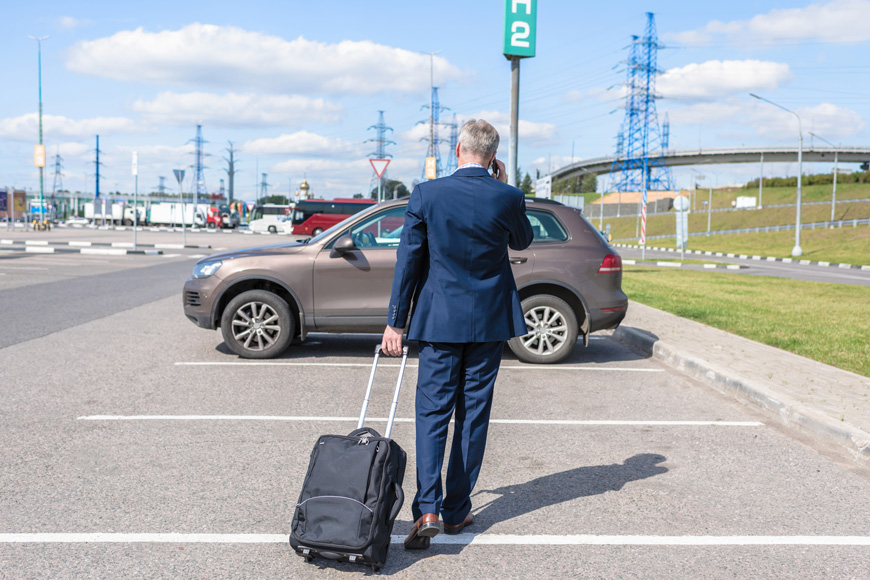
On-site long term parking
On-site long term parking, or remote parking, allows a traveler to leave their car at the airport for the duration of their trip. Business travelers make up most of the clientele for these lots. Shuttles bring the passengers from the long-term lot to the airport entrance. Alternatively, travelers in a hurry might access curbside valet from departure zones. Some long-term parking lots offer concierge services like car wash, detailing, fill-up, and oil change.
Long-term parking is sometimes also used by employees if the airport does not have a dedicated staff lot. Weekly, monthly, or membership passes are often available. Some lots offer discounts for early booking or reward programs for regular use.
Off-site long term parking
Off-site long term parking is available near major airports. These are run by companies not affiliated with the airport. Fees are often but not always cheaper than on-site parking. Large off-site companies may offer discounts at many airports to their members. Off-site parking started out catering to the non-business traveler. However, these companies now compete for the business traveler by offering upgrades, like concierge services. Shuttles to and from the airport are offered.
Car rental parking
Airports usually work in partnership with one or more car rental companies to provide rental options. These can be pre-booked or booked at the airport terminal.
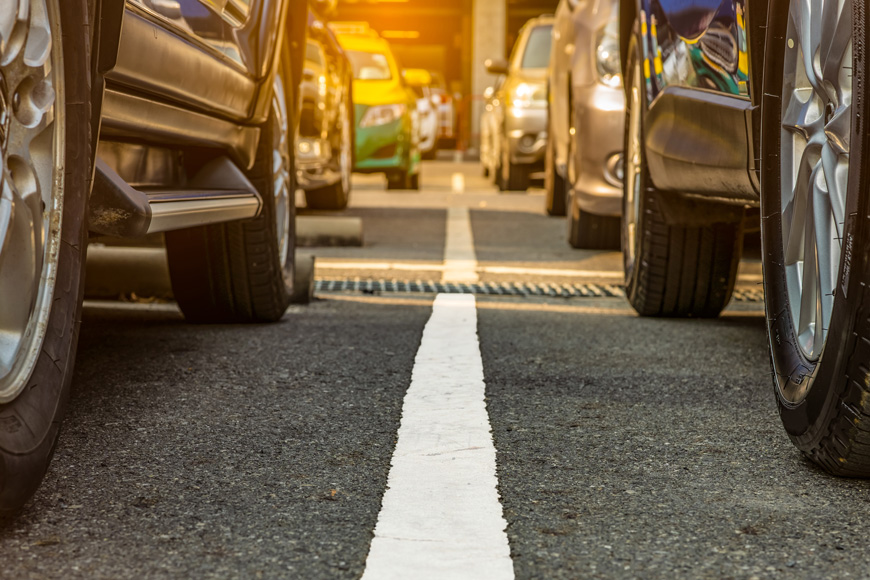
The business of airport parking
Only 56% of airport revenue is aeronautical, according to a 2019 Report from the Airport Council International. 39.4% of revenue comes from non-aeronautical services at the airport, including retail, services, and parking. Parking is 20% of that non-aeronautical revenue, earning about $12–13 billion dollars annually.
At many airports, private vehicles make up a smaller percentage of ground access transportation than they did a decade ago. The percentage share of rental cars, taxis, limos, ride-share, shuttles, and transit all have grown during that time. However, there has also been an overall increase in passengers. Airports are managing more congestion and the need for parking has not declined.
When planning lots and lot sizes, airports must keep in mind peak occupancy and how the congestion into and out of the different types of lots will affect traffic flow. If there are one or two major traffic arteries serving an airport, the ability of cars to clear from the space becomes important.
In many places, a large lot is considered full when it is 85%-95% occupied. Cars traveling slowly to find a space create congestion. This capacity will be lower if the lot is designed poorly. If there are only one or two major access lanes or cars are slow to exit the facility it will cause more challenges for incoming cars.
In order to determine needed capacity, an airport must figure out passenger levels on its most busy day. What transportation modes are trending are important to consider. Pricing may encourage people to come to the airport by taxi or transit. Yet these days, the airport also considers the importance of non-passenger customers coming to use airport amenities.
Airports and parking liability
Liability is an important consideration in deciding parking design.
When a car is parked by valet, the lot is more likely to be found responsible for damage. However, if the driver parks their own car and leaves, carrying their keys, the lot is only liable for its own negligence. Maintenance and thoughtful design are important.
Maintenance requires good lighting, upkeep of paved and structural surfaces, and clear pedestrian information. Design requires integrating vehicle and pedestrian needs. For example, wheel stops can be a very important and useful tool for cautioning a driver against moving too far forward and hitting a wall. However, when installed improperly, they can also be a tripping hazard. Good practices must be observed. Good lighting, well-marked crosswalks, clear indication of traffic direction, and safety bollards to protect pedestrian spaces are all ways that an airport can show proper maintenance and good design in lots.
Evolving technologies and planning
Airport parking lots will continue to evolve as ground transportation and airplane usage change. The future may require more room for autonomous cars, light-rail integration, or transit. Fluctuations in air-traffic demand may require further diversification, and attention to the needs of different groups of traveling.
Online booking, travel sites, and booking apps already allow pre-booking of services. Valets, parking spaces, and shuttles are all easily accessible by app. This data is useful in predicting peak flow—but as apps and approaches come and go, this data can be disrupted. As such, airport parking is not a static, simple thing either for airports or passengers, but rather an ever changing aspect of the journey from ground to sky.

